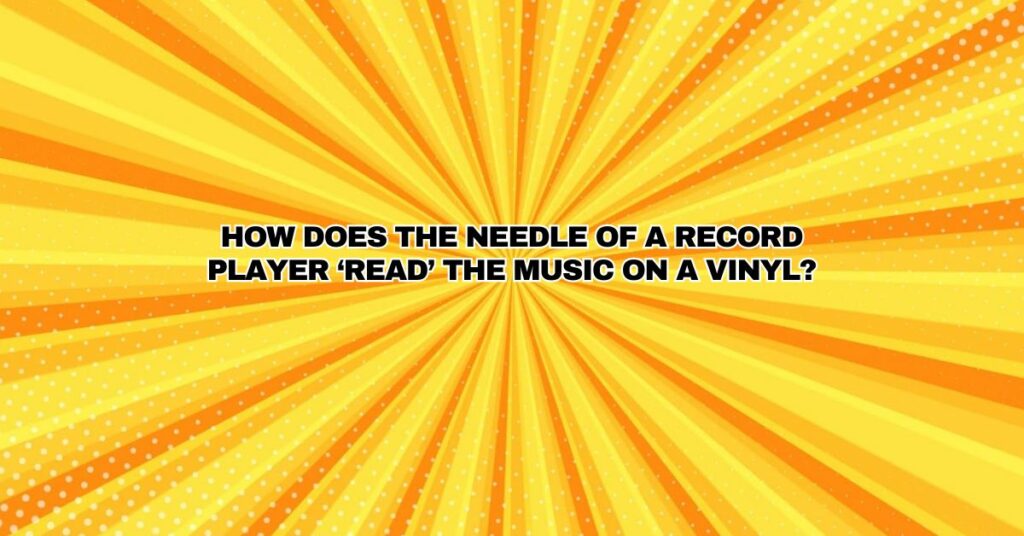Vinyl records, with their analog grooves etched into their surfaces, have captivated music enthusiasts for decades with their unique and warm sound. Central to the vinyl listening experience is the stylus, or needle, which traces these grooves to transform physical movements into sound. In this comprehensive article, we’ll unravel the fascinating process of how the needle of a record player “reads” the music on a vinyl record and translates it into the audio we hear.
The Anatomy of a Stylus:
Before diving into the reading process, let’s understand the key components of a stylus:
- Diamond or Sapphire Tip: The stylus features a small, precisely cut diamond or sapphire tip. This hard material is used to minimize wear and maintain a sharp point, ensuring accurate tracking of the grooves.
- Cantilever: The tip is attached to a thin, lightweight rod called a cantilever. This component acts as a bridge between the tip and the rest of the cartridge.
- Cartridge: The cartridge, which houses the stylus, contains a coil or magnet that generates an electrical signal based on the movement of the stylus.
The Grooves on a Vinyl Record:
Vinyl records store music in the form of grooves on their surface. These grooves represent the vibrations produced by musical instruments and vocals during the recording process. As the stylus traverses these grooves, it encounters variations in depth and shape. These variations mirror the sound waves captured during the original recording.
The Playback Process:
Now, let’s explore how the stylus “reads” the music on a vinyl record and translates it into audible sound:
- Placing the Stylus: The tonearm, holding the stylus, is carefully positioned at the outer edge of the vinyl record. The tonearm features a counterweight to balance the stylus’s downward force, ensuring precise tracking.
- Lowering the Stylus: With the tonearm in place, the user gently lowers the stylus onto the grooves of the record. The stylus makes contact with the vinyl, and the playback begins.
- Tracking the Grooves: As the record spins, the stylus follows the spiral grooves, mimicking the intricate path etched into the vinyl. The variations in the groove’s depth and shape translate to subtle vertical and horizontal movements of the stylus.
- Generating an Electrical Signal: These movements of the stylus generate an electrical signal within the cartridge. In a typical magnetic cartridge, the stylus’s movements create relative motion between the magnet and coil. This generates an electrical voltage, which directly corresponds to the vibrations within the grooves.
- Amplification and Playback: The weak electrical signal produced by the cartridge is then sent to the phono preamplifier, which boosts the signal and applies equalization to correct for the physical limitations of vinyl records. The amplified signal is subsequently sent to the amplifier and speakers, where it is converted back into audible sound.
- Sound Reproduction: The vibrating stylus accurately reproduces the audio signals, leading to the playback of music with remarkable fidelity. It captures the nuances of the original recording, from the rumble of a double bass to the delicate whisper of a flute.
Challenges in Vinyl Playback:
The process of “reading” music from vinyl records, while fascinating, is not without challenges. Vinyl records are sensitive to external factors, such as dust and temperature fluctuations, which can affect the stylus’s tracking and sound quality. Over time, the stylus also experiences wear and tear, requiring periodic replacement to maintain accurate playback.
In Conclusion:
The needle or stylus of a record player plays a pivotal role in the vinyl listening experience, meticulously tracing the grooves of a vinyl record to retrieve and recreate the original recorded sound. This analog process, which has enchanted music enthusiasts for decades, is a testament to the enduring appeal of vinyl records and their unique ability to convey the warmth and authenticity of analog sound. As vinyl continues to thrive in the digital age, the stylus remains the key to unlocking the magic of vinyl playback.

